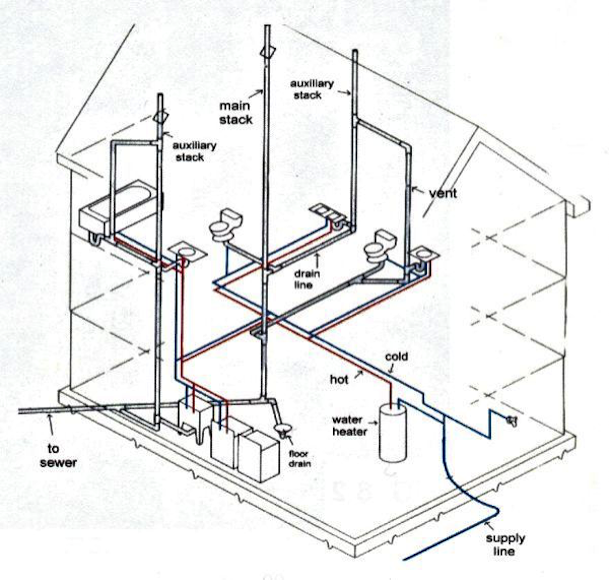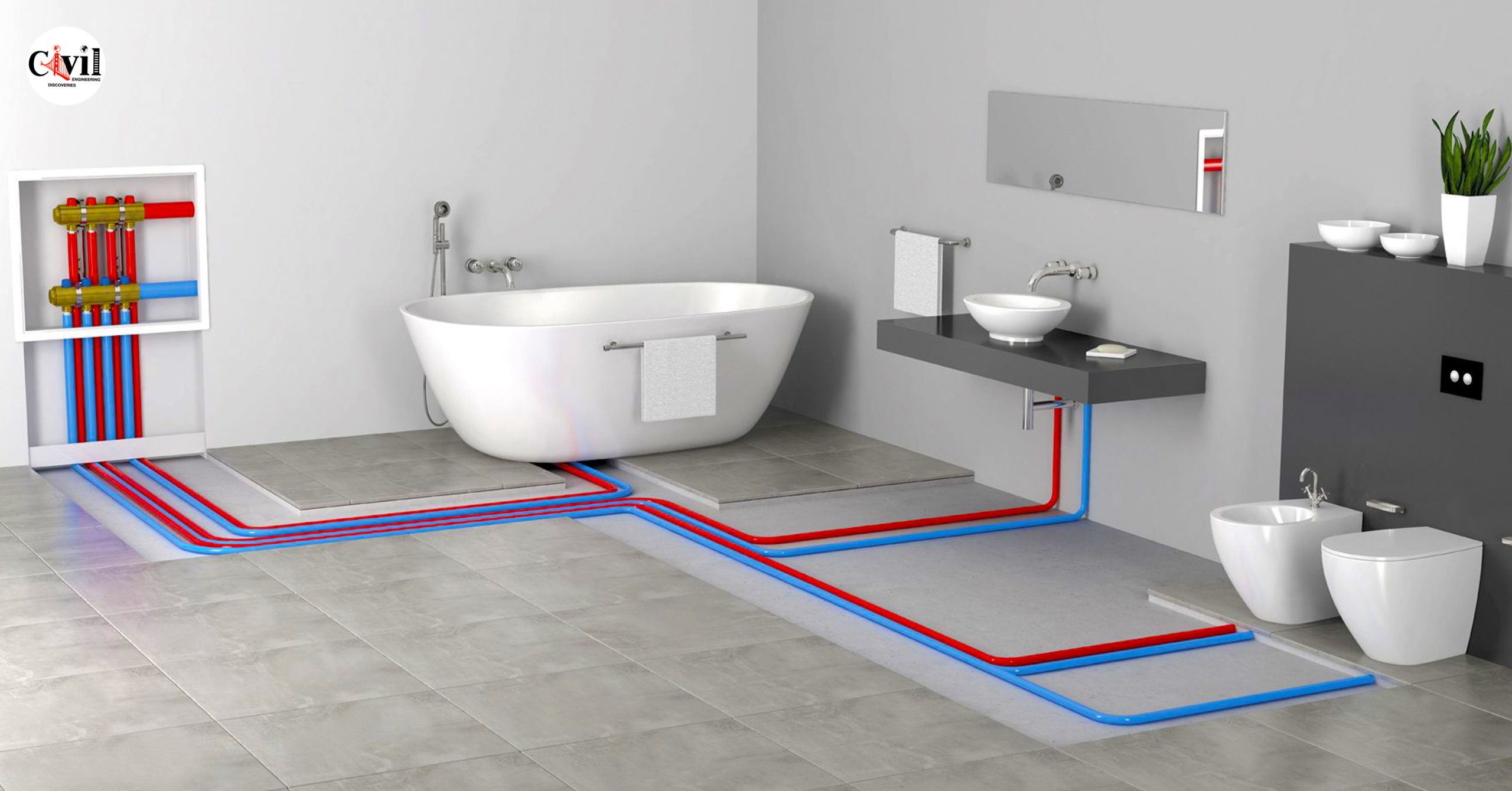Understanding The Structure of Your Home's Plumbing System
Understanding The Structure of Your Home's Plumbing System
Blog Article
Listed here on the next paragraphs you can get additional reliable expertise relating to Plumbing Installation 101: All You Need to Know.

Comprehending just how your home's plumbing system functions is essential for each home owner. From delivering clean water for alcohol consumption, cooking, and bathing to securely getting rid of wastewater, a well-maintained pipes system is critical for your household's wellness and comfort. In this detailed overview, we'll explore the elaborate network that makes up your home's pipes and deal pointers on maintenance, upgrades, and managing usual issues.
Introduction
Your home's plumbing system is greater than simply a network of pipelines; it's a complex system that ensures you have accessibility to tidy water and reliable wastewater removal. Knowing its elements and exactly how they interact can assist you protect against pricey fixings and ensure everything runs smoothly.
Fundamental Parts of a Pipes System
Pipelines and Tubes
At the heart of your pipes system are the pipes and tubing that carry water throughout your home. These can be made from different products such as copper, PVC, or PEX, each with its advantages in terms of sturdiness and cost-effectiveness.
Components: Sinks, Toilets, Showers, and so on.
Components like sinks, bathrooms, showers, and bath tubs are where water is made use of in your house. Recognizing just how these components attach to the pipes system assists in identifying issues and preparing upgrades.
Shutoffs and Shut-off Factors
Valves manage the flow of water in your plumbing system. Shut-off valves are crucial throughout emergency situations or when you require to make repairs, allowing you to isolate parts of the system without disrupting water flow to the whole home.
Water System
Key Water Line
The main water line connects your home to the community supply of water or a personal well. It's where water enters your home and is dispersed to numerous components.
Water Meter and Stress Regulatory Authority
The water meter actions your water use, while a pressure regulator ensures that water flows at a safe pressure throughout your home's plumbing system, avoiding damage to pipes and fixtures.
Cold Water vs. Hot Water Lines
Understanding the distinction in between cold water lines, which provide water straight from the major, and warm water lines, which lug warmed water from the water heater, assists in fixing and planning for upgrades.
Drain System
Drain Piping and Traps
Drain pipelines carry wastewater away from sinks, showers, and commodes to the drain or septic tank. Catches stop sewer gases from entering your home and also catch debris that could create blockages.
Ventilation Pipes
Ventilation pipelines allow air right into the drain system, preventing suction that can slow down drainage and trigger traps to empty. Proper air flow is crucial for preserving the integrity of your pipes system.
Significance of Proper Water Drainage
Guaranteeing appropriate drainage protects against backups and water damages. Frequently cleansing drains and keeping traps can prevent costly fixings and prolong the life of your pipes system.
Water Heating Unit
Sorts Of Water Heaters
Hot water heater can be tankless or conventional tank-style. Tankless heating systems heat water as needed, while tanks keep warmed water for instant usage.
Upgrading Your Pipes System
Reasons for Upgrading
Updating to water-efficient fixtures or changing old pipes can improve water high quality, reduce water expenses, and raise the value of your home.
Modern Pipes Technologies and Their Benefits
Check out innovations like clever leak detectors, water-saving bathrooms, and energy-efficient hot water heater that can save cash and lower environmental effect.
Price Considerations and ROI
Determine the ahead of time costs versus long-lasting financial savings when considering pipes upgrades. Several upgrades spend for themselves through decreased energy bills and fewer repair services.
Just How Water Heaters Connect to the Plumbing System
Comprehending just how water heaters link to both the cold water supply and warm water circulation lines helps in diagnosing problems like not enough warm water or leaks.
Maintenance Tips for Water Heaters
Frequently purging your hot water heater to remove sediment, inspecting the temperature level setups, and evaluating for leaks can extend its life expectancy and enhance power performance.
Usual Plumbing Issues
Leaks and Their Causes
Leaks can happen because of maturing pipelines, loosened installations, or high water pressure. Addressing leakages promptly avoids water damage and mold and mildew development.
Obstructions and Clogs
Clogs in drains and toilets are frequently triggered by flushing non-flushable products or an accumulation of grease and hair. Utilizing drain screens and being mindful of what decreases your drains can avoid blockages.
Indications of Plumbing Problems to Watch For
Low water pressure, slow drains pipes, foul odors, or abnormally high water costs are indicators of possible pipes issues that must be attended to quickly.
Plumbing Maintenance Tips
Regular Inspections and Checks
Set up yearly pipes assessments to catch issues early. Look for indicators of leakages, rust, or mineral accumulation in faucets and showerheads.
DIY Upkeep Tasks
Straightforward jobs like cleaning faucet aerators, checking for commode leakages utilizing dye tablets, or shielding subjected pipes in cold environments can stop major plumbing concerns.
When to Call a Specialist Plumbing Technician
Know when a plumbing issue calls for specialist competence. Attempting complex fixings without appropriate knowledge can cause more damage and greater fixing expenses.
Tips for Decreasing Water Use
Basic practices like fixing leakages quickly, taking much shorter showers, and running complete loads of washing and meals can conserve water and reduced your utility expenses.
Eco-Friendly Plumbing Options
Take into consideration sustainable plumbing products like bamboo for flooring, which is durable and green, or recycled glass for countertops.
Emergency situation Preparedness
Actions to Take During a Pipes Emergency
Know where your shut-off shutoffs are located and just how to turn off the water in case of a burst pipeline or major leakage.
Significance of Having Emergency Situation Get In Touches With Convenient
Keep call info for neighborhood plumbings or emergency situation services conveniently available for fast response throughout a pipes dilemma.
Ecological Effect and Preservation
Water-Saving Fixtures and Home Appliances
Installing low-flow faucets, showerheads, and commodes can significantly minimize water usage without compromising efficiency.
DIY Emergency Situation Fixes (When Applicable).
Short-term solutions like using duct tape to spot a leaking pipe or positioning a bucket under a leaking tap can minimize damage up until a specialist plumbing arrives.
Verdict.
Recognizing the anatomy of your home's pipes system empowers you to keep it effectively, conserving money and time on repairs. By following routine upkeep routines and remaining informed regarding modern plumbing modern technologies, you can ensure your pipes system runs efficiently for many years ahead.
HOW YOUR PLUMBING SYSTEM WORKS
Which Pipes Do What?
Blue lines = fresh water supply entering the building Red lines = hot water supply entering the building Grey lines = pipes carrying waste away from the building and venting pipes carrying gases away from the building (through the roof) YOUR MAIN PLUMBING SYSTEMS
There are two main plumbing systems that support your home s basic plumbing needs one that brings clean water into your home, and one that sends dirty water away from your home. Connected to the toilet, bath, shower, and other faucets in your home, these two systems keep your water flowing in the right directions.
ACCESSING FRESH WATER
Fresh and clean water is brought into your home through the main water supply line . Filtered through one pipe, this water is pressured to flow into the various fixtures in your home at any given time.
This water can be sourced from a well located on your property, a pond or river (mostly cottages), or, as in most cases, from the city s municipal water treatment centre. However, it is important to note that water that is untreated, such as the water siphoned from ponds or rivers, may not be safe to drink. Personal water supplies always need to be treated for hardness and contaminants before consumed.
MUNICIPAL WATER SUPPLIES
Improve taste and odour Remove sediment Eliminate hardness Reduce chlorine COLD WATER SUPPLY VS. HOT WATER SUPPLY
Cold water flows into your home or building through the service line, which then distributes hot or cold water to your fixtures. This line is most commonly run through a central column that runs floor to floor. Hot water runs in short and straight pipes as the longer the pipeline, the more heat that will be lost in the transfer. Having shorter pipes also allows residents to access hot water more quickly.
WASTE WATER SYSTEM
Your wastewater system is divided into two parts pipes that send wastewater away from your home and venting pipes that send sewer gas away from your home. Sewage water travels through pipes that flush the water and waste towards local sewers that are operated and managed by your city or town. Most sewer systems rely on gravity to move the wastewater to where it needs to go.
The further away from your toilet or sink, the larger wastewater pipes become. This allows for waste to be disposed of from various parts of your home or business at once without pipe blockages. The angle and flow of these pipes are also essential for keeping your waste pipes clear of build up.
https://harrisplumbing.ca/how-your-home-plumbing-system-works/

I found that article on The Inner Workings of Your Home's Plumbing while doing a search on the web. Are you aware of somebody who is intrigued by the niche? Do not hesitate to promote it. Thanks for going through it.
Apply Now Report this page